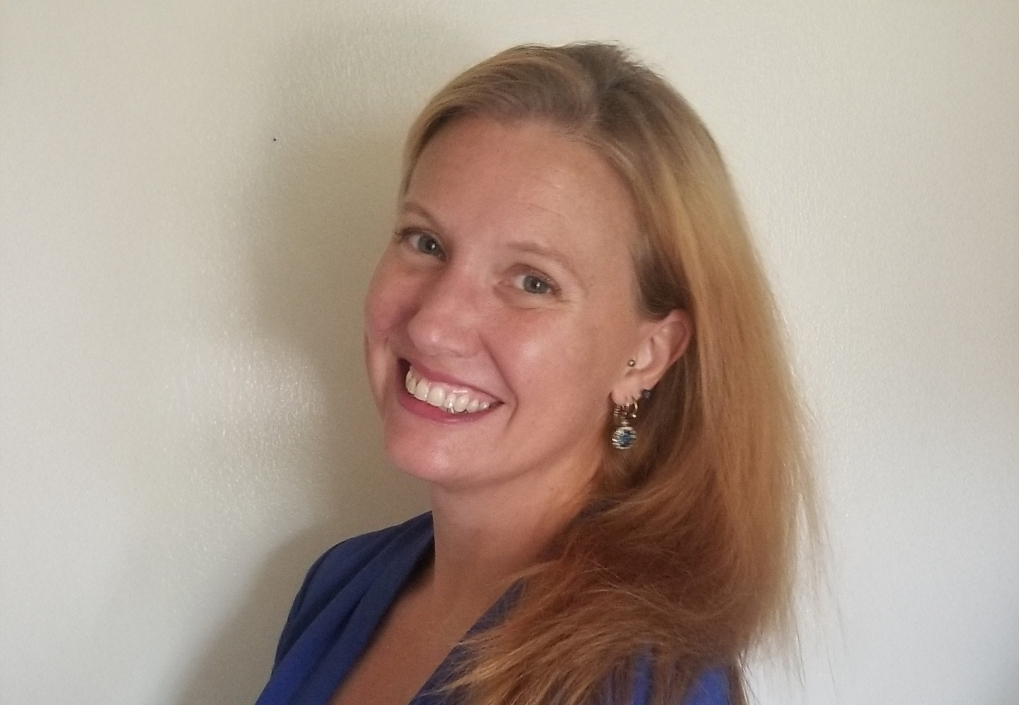Geographic Atrophy: Making An Informed Treatment Choice
Featuring
Pamela Ann Weber, MD
Vitreoretinal Consultants of New York
Wednesday, February 26, 2025





Vitreoretinal Consultants of New York
Wednesday, February 26, 2025

With two FDA-approved treatments now available for geographic atrophy, an advanced form of dry age-related macular degeneration, we’ll explore how to navigate treatment options, engage in shared decision-making with your healthcare team, and maximize your eye health. February is Low Vision Awareness Month, so we’ll also discuss support options for those living with vision loss.
Dr. Pamela Weber is presently practicing with Vitreoretinal Consultants of New York which is part of Retina Consultants of America. She is actively involved in research, surgery and patient care. Her special interests include macular degeneration, diabetic retinopathy and ROP (retinopathy of prematurity). She has been the principal investigator for over 40 phase 2 and 3 clinical trials. Her education includes a BSC from McGill University, and a Medical degree from Columbia College of Physicians and Surgeons. She did her ophthalmology residency at New York Eye and Ear Hospital, and her fellowship in vitreoretinal surgery at Harvard University, Mass Eye and Ear. She was a full-time member of the Stony Brook University Ophthalmology and remains an Assistant Professor there.
DR. DIANE BOVENKAMP: Hello. My name is Dr. Diane Bovenkamp, Vice President of Scientific Affairs at BrightFocus Foundation. I’m pleased to be your host for today’s Macular Chat, “Geographic Atrophy: Making an Informed Treatment Choice.”
Macular Chats are a monthly program supported, in part, by educational grants from Apellis, Genentech, and Regeneron, designed to provide people living with macular degeneration and family and friends who support them with information straight from the experts. BrightFocus Foundation’s Macular Degeneration Research Program has supported nearly $53 million in scientific grants exploring the root causes and potential prevention, treatments, and ultimately, we hope, a cure for macular degeneration and is currently investing in 49 active projects across the globe.
Now, I am pleased to introduce today’s guest speaker. Dr. Pamela Ann Weber is presently practicing with Vitreoretinal Consultants of New York, which is part of Retina Consultants of America. She is actively involved in research, surgery, and patient care. Her special interests include macular degeneration, diabetic retinopathy, and ROP, or retinopathy of prematurity. She has been the principal investigator for over 40 Phase 2 and Phase 3 clinical trials. Her education includes a Bachelor of Science from McGill University in Montreal, Canada, and a medical degree from Columbia College of Physicians and Surgeons here in the U.S. She did her ophthalmology residency at New York Eye and Ear Infirmary and her fellowship in vitreoretinal surgery at Harvard University Mass Eye and Ear. She was a full-time member of the Stony Brook University Department of Ophthalmology and remains an assistant professor there. Wow, you are so accomplished, Dr. Weber. Thanks for joining me today.
DR. PAMELA ANN WEBER: Oh, thank you. It’s really a pleasure to have a chance to do a Macular Chat, and I want to thank BrightFocus for inviting me and Diane for inviting me. And I hope this is a good learning opportunity for everyone.
DR. DIANE BOVENKAMP: Absolutely. So, let’s just get right down to it, roll up our sleeves. Let’s start today with the basics. What is geographic atrophy, which is sometimes referred to with the acronym GA?
DR. PAMELA ANN WEBER: Oh, sure. So, this is a really complex medical problem, I think, for patients to understand. So, basically, macular degeneration is a disease that affects people over the age of 50. And macular degeneration is the general name for a lot of these subdivisions. So, the first subdivision is dry macular degeneration. And that’s kind of the first step in developing any kind of macular degeneration. And some of these patients will go on to the geographic atrophy, from dry to GA, but some will also go on to what we call wet, which means there is subretinal neovascularization growing under the retina. But before we get too into it, let me just … I don’t want to lose people right from the very beginning. Let’s just review a little eye anatomy, to make things clear.
DR. DIANE BOVENKAMP: Thank you.
DR. PAMELA ANN WEBER: Yeah. So, if you think of the eye as maybe a tennis ball, the front of the eye or the front of the tennis ball, the clear part where you put your contact lens on if you wear contact lenses, is called the cornea. And the iris is behind that, and that gives you your eye color, so you might have a brown iris or blue iris. And then behind that, you have your pupil, which is a hole within the middle of the iris. And behind that is the lens, and it should be like a clear piece of glass, and it’s suspended just behind the iris. And if you have an opacity, then you have cataract surgery, so that’s what cataract surgery is. So, everything that I just talked about is pretty much the front of the eye. But what we’re talking about today is the back of the eye. So, behind the lens, if you think of the inside of the tennis ball and what fills the tennis ball, or your eyeball, is something called vitreous—which should be really like a jelly, really like Jell-O—which is collagen and water. And it should be nice and clear. And as we age, things change, and it can cause problems and you may have floaters, and that’s all vitreous. And then you go to the very back or the inner layer of the tennis ball, and that’s where the retina is, so it’s way, way in the back. And, you know, a tennis ball is pretty big; our little eye tennis ball is pretty small.
So, the retina, which we’re talking about today, is really about the size of a quarter, and it’s spread across the back of that tennis ball. And the thickness is like a piece of silk, and it’s a very fine neurologic tissue that has multiple layers. And even though it’s thin, thin, thin, there’s a lot of different anatomical structures within it. And then when we talk about the macula, that is retina, but it’s a subdivision of the retina, and it’s way, way in the back of the eye. And the retina, in general, I would say, is maybe 40 mm, or maybe like 1.5 inches. The macula represents about 13 percent of that and is about 5 mm, so it’s a really, really, really small area. And that’s what we’re talking about today, something that’s 5 mm in size. And that’s pretty much what devoted my life to, which is pretty interesting.
So, what happens? Well, first of all, we know macular degeneration has a very large genetic predisposition, so it runs in families. Certain things make it worse. Smoking makes it worse, as you may have seen in this, kind of, terrible commercial that’s on TV right now. So, we kind of know which patients we should be watching. Certainly, if you have a family history, we know we have to watch you. And the first sign of macular degeneration is drusen, which are little yellow spots in the retina, deep in the retina. And they represent, like, lipoprotein, and they accumulate there because there’s kind of a dysregulation of cellular functioning in the retina. So, that’s the first sign that things are not right and kind of the hallmark of this disease.
And so, again, I just want to kind of go back to give you the reason why this is so terribly important even though it’s a tiny little part of the eye. That part of the eye gives you your very, very best vision, the vision you really care about—your reading vision and your driving vision. And what’s really kind of crazy is when we talk about the numbers of people that are affected by this, it’s mind boggling. There’s probably 11 million Americans that have GA, and probably around 27 percent of U.S. citizens over the age of 80. And the prevalence is increasing, so you can see how this is a big problem and we really want to focus on this. So, at any rate, some people will just stay with dry drusen and not really do much of anything. But then there’s a large percentage of these patients that will go on to what we call GA, or geographic atrophy. And what that represents is, like, cellular death. There’s like little islands in the macula where the cells just start dying. And my patients often say, “You know I’m really having problems with my vision,” and I say, “Yeah, it’s like Swiss cheese vision, right? Patches are missing.” And that’s GA, and these patches will grow. And at first, they may not be that bad, they may not be dead center, they may be a little off, and the other eye can compensate. A lot of times you have it going on in both eyes but maybe not in exactly the same location so that you can, kind of, compensate and keep things rolling. But we know that they expand, and so that’s why we wanted to start having some treatment for this, and that’s why, luckily, now we do have some treatment.
DR. DIANE BOVENKAMP: That’s a really, really great analogy there just to think about a tennis ball filled with Jell-O and thinking about the layers. And I guess if you were saying that the area that sees, the back of the eye is like a quarter size, the macula’s kind of like the head of a pen that you put on a board, right? You said 5 mm. It’s about a pin head.
DR. PAMELA ANN WEBER: Yeah, so 5 mm, which is about 0.2 inches. It’s small.
DR. DIANE BOVENKAMP: Yeah, and that’s responsible for a lot of our color vision, our sharp vision, a lot of the vision to see our grandkids’ faces and photos. I’m a photographer so and that tiny little part is for that. And so, of course, there’s treatments for wet macular degeneration, but just before we get into what the treatments are, when you say that you get these drusen deposited and then the degeneration can go towards either wet or it can go to geographic atrophy, did the deposits kind of happen in between the different layers and it just kind of causes cell death because the layers are coming apart and they’re just not happy? Why do those cells die? Is it known?
DR. PAMELA ANN WEBER: Yeah. I mean, it’s kind of complex, but the fact that they’re deposited there is because the photoreceptors that allow you to … you’re always shedding photoreceptors so you have nice, sharp, new photoreceptors for vision. And so, the old ones have to be metabolized, and so the metabolism breaks down, and so, you’re actually, kind of, seeing little piles of like maybe garbage or something, you might want to call it. And that’s really what a drusen is like, you’re not able to clear away the dead products of the shedding of photoreceptors. You can’t keep up with it, and so they get stuck there. And that bridge collapsed and has gone on strike. Yeah, and so that upsets, you know, the whole metabolism of the eye.
DR. DIANE BOVENKAMP: Got it. Great. And so okay, so we have all this. The garbage collectors have gone wrong in the eye, and so what we want to try and do is detect GA early and use one of the two FDA-approved treatments currently available. Can you tell us what those two options are and how do they work with what we now know about how GA forms?
DR. PAMELA ANN WEBER: Yeah. So, they’re very similar, these two drugs. One is Syfovre® and one is Izervay™. Those are the market names. So, Syfovre was the first one that got FDA approved. And that was approved in February of 2023, so we actually have the most information on this drug. And I have to tell you, I had worked 30 years before I could offer anything to these patients. I mean that’s a long time—so for the longest time we were just following these patients, and we didn’t really even talk about it much because we had absolutely no treatment. So, it was a really big breakthrough when in February 2023 we actually got a drug that that slows down the progression of loss. And that was Syfovre. And what it does is it inhibits C3, which is part of the complement pathway.
And this is where things get a little confusing if you don’t know a lot of stuff about the immune system. But basically, we have an immune system in our body to fight infection, right? And there are many ways we fight infection, but one is through this complement system, and it’s very interesting. So basically, when a pathogen comes along, it triggers this complement pathway and a series of protein activations happens down this pathway, which ultimately would lead to killing the pathogen and maybe killing any damaged cells that had been created in the process of this pathogen or this infection. So, that’s great. We need this. This keeps us alive and healthy. But what we found is that in GA, it had gone a little awry and that it was overactive. And so, it was leading to increased inflammation and cell death. So, once the scientists figured out that, then we were looking to find drugs that could block a little bit within this pathway to try to save cells or slow down cell death. And so, Syfovre was the first one, and it inhibits this one protein called C3. And it’s very interesting because, again, we have to explain to patients very carefully so that they understand this is not considered a cure. It doesn’t stop the disease; it just slows down the progression of loss.
So, in other words, if you’re in a little car and you’re going downhill and you’re heading toward the cliff, you’re not going to get to the cliff as fast. The car is going more slowly. And what we hope to do is slow this little car down so maybe it doesn’t get to the cliff, which would be, you know, loss of vision and legal blindness or something. Or at least slow the car down enough so that when a better treatment comes along that maybe we’ll erase the car altogether. You’ll be ready to go. Like, we’ve kept you going to this point, and you’ve lost as little as you could possibly lose, and then when something better comes along—and, of course, something better will come along—we can even do better. Does that make sense?
DR. DIANE BOVENKAMP: I like this analogy. So, if I can expand on it using my wonderful imagination, it’s kind of like the car is going out of control, but whenever you get this injection, there’s a policeman that comes and cuffs the driver, and the car stops for a little while until another driver gets it—
DR. PAMELA ANN WEBER: Oh, I like that.
DR. DIANE BOVENKAMP: —start going again, and then you’ve got to have another policeman or policewoman, whatever, to come and stop the crazy driver. So, yeah, they’re like bad boys out of control, and the injections are a way to stop it. I don’t know if you think that that analogy is appropriate, but I really—
DR. PAMELA ANN WEBER: Oh yeah, I love it. And then maybe eventually the driver of the car gets thrown in jail, and the problem is solved.
DR. DIANE BOVENKAMP: And there’s two bad guys, right. So, there’s a C3 bad guy and a C5 bad guy, so that’s the other drug, the Izervay, right? So, the C3 and C5 are both really bad at letting this inflammation get out of control.
DR. PAMELA ANN WEBER: Exactly. Yeah, so Izervay was approved in August of 2023, like maybe 6 months later or so. And that blocks a little further down the chain at C5. And so, when we look at the data, the first year of data for how much it slows down is about 22 percent with each drug. But then as the years go by, this is where we start … and again, I just want to explain to patients that this is an active learning process. These drugs are not very old, and so data is constantly being collected from the original studies. So, like now, with the original patients that were in the studies to get FDA approval, for Syfovre, we have 4-year follow up that’s just coming out now. So again, we’re learning a lot more as the years go by—you know, how to how to give these drugs, how often to give these drugs, and what the effect is. And what we’re learning from the Syfovre is that the longer you stay on it, the more the little car gets slowed down, which is very interesting. So, by 4 years, the car has slowed down 40 percent.
DR. DIANE BOVENKAMP: Yeah. That’s great. Slow is good.
DR. PAMELA ANN WEBER: Yeah. But, of course, for the patient, they’re like, “Well, doctor, like how long do I have to be on these drugs?” And the answer is, “Well, until a better drug comes along.” So, it is it is a lot of work for the patients. They have to come in maybe monthly, it depends on the case. We’re also learning that in the first year or if you have really good vision, you may want to do it monthly every 4 to 5 weeks. But as time goes on, it seems like you can maybe sneak more into every 2 months. So, those are other things that we’re learning as we keep studying these drugs.
DR. DIANE BOVENKAMP: So, can you tell me how as a clinician, you sit down and have these conversations with your patients, so how is it determined which of the two treatment options will be used? Do you decide? Is there a conversation between you and your client before the treatment is started? And are there exclusion criteria for certain drugs—one so that you go to the other?
DR. PAMELA ANN WEBER: Yeah. So, I think a lot of retina specialists are leaning towards Syfovre because we have more clinical data, and clinical data always makes us happier. The more we know a lot about a drug, the happier we are. But in general—and they’re very similar, I would have to say—but it does seem like as time goes on, maybe Syfovre is winning the game here. But we also seem to think, and again, this is a very active process, and we’re always reviewing data. It does seem that Izervay may have a little less inflammation in terms of when we inject it in the eye, some people will respond almost like an allergic reaction. And we don’t like that in the eye because it can be very serious and cause a lot of problems. So, it looks like they’re both very, very safe. I have to say, I’ve seen very few inflammatory reactions like that, which we call intraocular inflammation. But it seems that right now, like Izervay might even have a lower rate. But it is low; it’s like one in 10,000 or something. And usually, what’s interesting is it usually occurs after the first injection. So if you make it through the first injection, you’re probably good, like you don’t have to keep worrying about IOI [idiopathic orbital inflammation].
DR. DIANE BOVENKAMP: And it’s good that there are two options, right? So, if there is one, then you just switch to the other, right, if you react?
DR. PAMELA ANN WEBER: Yeah, though they’re pretty similar, so I would probably be worried about that, to tell you the truth. So, we have both available to my patients. Some patients want one over the other, which is fine. Like I said, they’re very similar. I lean a little bit more towards Syfovre just because we have more clinical data.
DR. DIANE BOVENKAMP: Okay. So, what advice do you have for someone whose provider has not had a conversation about available treatment options? How best can someone start the conversation?
DR. PAMELA ANN WEBER: I think there’s a handful of doctors that feel that it just doesn’t work at all. But then I always think, you know, we have really good clinical data that shows that it does work. And I also think that since the risks are really pretty low, you’re probably better off getting the drug than not getting the drug. So, I think if your doctor doesn’t do it, if he’s one of those—he or she—is one of those practitioners that just doesn’t think it works, maybe get a second opinion. You can certainly always ask your doctor. A lot of patients are coming— now that we have all these commercials on TV—a lot of my patients are coming in and they’re saying, “Well, do I have GA? And if I have it, is it getting worse?” That’s the critical question: Is it getting worse? And so, I think the best thing may be to approach a doctor and say, “Hey, I hear about this GA. Do I have it?” And if he says—he or she says—yes, then you want to say, “Well, how bad is it, and is it getting worse? And we have, with our studies that we do, our OCTs and our fundus photos, we have great clinical data. So, if you’ve seen the doctor more … and some of these are new patients. If I haven’t seen them, I’ll say, “You know what, it’s hard for me to judge right now, but let’s look at this over the next couple of months and we’ll see, and then I’ll give you a really clear answer.” And certainly, if it’s vision threatening, we’ll get him right on the drugs. And if it’s very close to fixation or if there’s progression, or if they’re down to one eye, like if something bad has happened to the other eye, then we really push. If they’re like, “Well, I’m not so sure, doctor. That’s a lot of injections. I don’t know,” then we wait to see that we can show that there’s progression, you know.
We always work with the patient because this is a huge … it’s your vision. It’s huge commitment to come monthly or every 2 months. There can be costs associated with it, so on and so forth. And this is really long-term management. It’s not short. When we treat wet AMD, that’s short-term management. You’ve got to get the drug or you’re going blind. But this is more long-term management. So, then we say, okay, like we take into a lot of considerations: How is the patient’s health? What other medical problems do they have? How likely it is that they’re going to live another 10 years? You know, all these things. But I can tell you I offer to everybody because I think those are personal decisions, you know, you decide what you want to do. And almost all my patients want drug, and I have 90-year-olds, 95-year-olds, and they’re like, “I want it. I need to see,” and I’m very happy to give it to anybody at any age, especially even the 95-year-olds because I think if you make it to 95, you’re going to keep going—there’s a good chance—and then vision becomes critically important because you might be limited in other ways. And so, you want these patients to remain independent and not fall and see as best, you know, it just goes on and on. It’s not just vision, it’s good vision keeps you healthy, you know.
DR. DIANE BOVENKAMP: Can you, with those tests, determine whether or not the—if we use the same analogy—whether or not the car is going 1 mile per hour versus 10 miles per hour?
DR. PAMELA ANN WEBER: Yes, I can over time. And for a lot of my patients … I’ve been practicing a long time, so we have a lot of data. So now that we have a treatment and I can say—I usually go back maybe 4 years or so— “In 2020, this is how you looked, and this is how you look today,” and then you can see. You don’t have to be a rocket scientist to read these pictures. So, they can get a good sense, you know, many of them have a good sense, anyways. They’re like, “I’m losing vision, okay. Give me these drugs.” So, they don’t need me to tell them that. But yes, we can figure out progression.
DR. DIANE BOVENKAMP: All right. So, I think this is a good time to ask: What are the most common questions that you hear from your patients who are recently diagnosed with GA and are deciding on treatment options?
DR. PAMELA ANN WEBER: Oh, number one is, “Does it hurt?” Because it’s an intraocular injection, you know? So, again, I always explain to them that the most pain you would feel—if any—would be like pulling out a hair, and it would last that long. We numb the eye with proparacaine, and we let them sit for a while, and we can even use lidocaine gel. And we use an itty bitty needle. And, I mean, the medicine we’re putting into the eye is itty bitty, so I always tell my patients, “An itty bitty drop of medicine on an itty bitty little needle, and it’s like ‘dink’ and I’m done.”
DR. DIANE BOVENKAMP: And you’re putting a needle into the Jell-O that pretty much is self-sealing again. You’re not going to be doing any damage in there.
DR. PAMELA ANN WEBER: Yeah. No, it’s amazing how well tolerated this is. We do it right in the office. It’s not like you have to go to the OR. Again, it’s really fast. So, that’s the number one question they ask me. And then of course everybody wants better vision. So, we have to carefully explain to them that we’re not going to make your vision better, but we’re trying to preserve as much of it as we can. So, we have to have a long discussion about that because it’s hard for patients to understand that, I think. So, we talk about that a lot. And we ease into it, you know. Most of the time patients are like, “Give it to me. Give it to me in both eyes. I’m coming in. Don’t worry.” But there are patients who say, “You know, I want to think about it. Can we talk about it and reassess in 3 months?” And I’m like, “Sure. Of course we can.” Or you can get a second opinion, of course. But we never push anybody. We like them to reach that decision on their own that it’s time.
And I say to them, “Listen, you’re not going to jail. We can try it. If you don’t like it, we can stop and give you a couple months off, you know, reassess.” You know, it’s very fluent. Now, if you’re part of a study, it’s a little different, but if you’re not part of a study, you have tremendous flexibility. And we have really good relationships with … like, I’m on Long Island, and a lot of my patients are what we call snowbirds, where they go to Florida. And we have great relationships with doctors in Florida, so that’s not a problem. You don’t have to fly back to see me, we’ll get you into a center there. And if they say, “Oh, gosh, my granddaughter’s getting married, and I want to come next month,” that’s fine, we’ll work around your schedule. “I think I need cataract surgery.” That’s fine. I’ll work around their schedule. Like, we always, we’re going to make this as easy as possible so that we don’t lose people and that they get the best advantage as they can. And we understand everybody’s lives are complicated and a little different. So, we do the best we can.
DR. DIANE BOVENKAMP: I think jumping off of what you said there where you have to make it clear that we’re just trying to preserve what you have, right? These are the drugs that we have. It’s amazing. As you said, we haven’t had for 30 years or more that you’ve been in practice, there hasn’t been a drug. This is a miracle, these two drugs. However, it’s just going to help you retain what you have, pretty much, right? So, it’s very important for everybody listening to go and get your eyes checked because time saved is vision saved, right?
DR. PAMELA ANN WEBER: Yeah. So, the earlier we start, the better off you are. And patients have to understand that. So, someone will be like, “Well, I want to wait till I lose a little bit.” And I’m like, “Okay, but once it’s gone, it’s gone.” So, with patients with good vision, we’re pretty aggressive about getting them in. But even, I find, like the patients who are like 20/200, they’re like, “I can’t afford to lose anymore. I want this drug.” I’m like, “Okay, I got it. You got it.” So, luckily, there’s no cut off or anything. It’s not like insurance companies are telling us, “No, if you’re 20/200, you can’t get it.” Thank God we don’t have that. Hopefully, that’s not coming down the road. Right now, we’re free to use it as we want.
DR. DIANE BOVENKAMP: Yeah, and just like you, I’m just so happy that there are options now for treatment for GA. I’ve been with BrightFocus for 14 years now, and there wasn’t for most of the time that it was before. Yeah.
DR. PAMELA ANN WEBER: Yeah, there was nothing to talk about, so yes.
DR. DIANE BOVENKAMP: Yeah. Are there any other questions? You talked about, I think, three questions there. Is there another question maybe that stands out to you? Or just another little advice for maybe people to ask their doctor a question.
DR. PAMELA ANN WEBER: You know, I think it’s always good to pick the doctor’s brain and listen to what they think and try to figure out where you are in this disease process. And take a look at old pictures if they have them, if it’s a doctor you’ve worked with for a while. And really try to get the lay of the land. Big questions: “Where am I? And how fast am I progressing?” And can you swing it? Can you make it to the doctor? You know, some people live very far away and so on and so forth. And I really think if you have a doctor that just doesn’t use it, I would find another doctor.
DR. DIANE BOVENKAMP: Okay, great. I’ve got a question here: Could you repeat the two drug names and spell them for everybody? Think there’s some people taking notes.
DR. PAMELA ANN WEBER: Oh, yeah. So, Syfovre is S-Y-F-O-V-R-E. And this is the marketed name. The actual generic drug name is pegcetacoplan, and that’s spelled—I don’t know if you need this—but P-E-G-C-E-T-A-C-O-P-L-A-N.
DR. DIANE BOVENKAMP: That’ll be good for the Scrabble tonight.
DR. PAMELA ANN WEBER: And then Izervay is the marketed name, so those are the names you’re going to hear on TV. And there’s been plenty of TV commercials with these two. And the generic name or the drug name is avacincaptad.
DR. DIANE BOVENKAMP: Why don’t you just spell Izervay?
DR. PAMELA ANN WEBER: Izervay. Okay, I-Z-E-R-V-A-Y.
DR. DIANE BOVENKAMP: That’s great. Thank you. So, do you provide any specific resources after a diagnosis of geographic atrophy? And just before you answer, I do want to mention that BrightFocus has a publication called, “Understanding Geographic Atrophy: Questions to Ask Your Doctor” that’s available online and in print, and we will put a link to it at the end of the transcript.
DR. PAMELA ANN WEBER: Yeah, so I am really impressed with BrightFocus. So, I work with another organization called MacularHope.org, and I do some lectures with them, and they’re very similar to BrightFocus. You’re probably familiar with them, but at any rate—
DR. DIANE BOVENKAMP: You said you work with them?
DR. PAMELA ANN WEBER: Yeah. So, I do lectures, and some of them are live. They do educational lectures for patients across the country. So, we just had one here on Long Island, and it was great. We had probably like 100 people show up, and I reviewed macular degeneration, as well as diabetic eye disease, but they also have a great … if you go online, all these lectures that we give are online. And all the lectures you can sign up for are online. So, you can take a look to see if there’s one in your neighborhood, because they do about 10 a year across the country, and they’re really great. And they’ve worked really, really hard to fund research, as well, and to educate patients and to provide some sort of place for patients to go to get more information.
DR. DIANE BOVENKAMP: Perfect.
DR. PAMELA ANN WEBER: So, all the drug companies give us pamphlets, which are very good. And then all our societies, like American Academy of Ophthalmology, AAO.org, they have information online. And ASRS, the American Society of Retina Specialists, ASRS.org, they have a lot of educational materials so, it’s pretty easy to get educational information.
DR. DIANE BOVENKAMP: Perfect. And we can put links to all of those that you mentioned there in the transcript. So, here is a little fun fact. February is Low Vision Awareness Month, and even though we are near the end of the month, it’s still important to raise awareness about macular degeneration. And BrightFocus has a group called the AMD Community Circle, which is a monthly Zoom meeting where those with macular degeneration can come together to share tips, questions, and build community, and if you’re interested in learning more about our Community Circle, please leave us a message after this Chat. So, Dr. Weber, along that line, how important do you feel it is for individuals to connect with others and share information?
DR. PAMELA ANN WEBER: You know, some people love support groups, and they really can share a lot of information. Of course, you always want to get correct information. So, it’s better, certainly, to go with an organization like BrightFocus than Instagram, you know, some random group on Instagram, because people put out weird stuff, you know, weird, supposed cures. And so, you want to make sure what you’re reading is factual. So, that’s really, really important. So, yeah, I don’t know. What was the question? I think I got off base here.
DR. DIANE BOVENKAMP: No, I think you answered it. It’s important to connect, but really, I do agree, I mean, if you do some scrolling on social media or Doctor Google, I would say before you repeat it to anyone or even say it out loud, I’d check with another reputable source. And you can always call us up or look online or kind of compare with BrightFocus’ information to double check.
DR. PAMELA ANN WEBER: Yeah. I just want to mention, it just occurred to me that there are many macular diseases. Probably the most common is age-related macular degeneration. But there are many, and so everybody thinks that they have macular degeneration, but not everybody does. So, some people have diabetic macular edema or other things, but I see that there’s confusion with the word “macula.” So, you just have to remember that macula represents a region of the retina and that there are multiple diseases. So, make sure that you’re talking about the right diagnosis, because people will come in and say, “Oh, I have macular degeneration,” but they don’t. I was like, “No, don’t give yourself that diagnosis. You have diabetic macular edema, or you have this,” you know. So, I just want people to be aware of that. Not everything macula is macular degeneration.
DR. DIANE BOVENKAMP: That is a very, very important point. And I guess that would be another thing if you’re sitting down talking to your doctor, you might want to ask them if you could record what they say what it is because, you know, you could be upset, and you walk away, and you go, “What did they just diagnose me with? I forgot what it is.” You can ask them to write it down or record it so that you’re not, you know, getting the wrong information. I think that’s really important.
So, you know, I think we have about 10 minutes left. There’s a few listener questions here that I’d like to ask. One listener says, “How do we pay for the injections when we are on a limited income and have Medicare Advantage, high cost, every 4 to 8 weeks?” And I guess it could just expand it to, you know, if people have limitations with whatever their own insurance is in the U.S., and maybe other places in the world might have other types of health care, but what kind of advice can you give to them?
DR. PAMELA ANN WEBER: That has become a giant problem because we used to have this wonderful thing called Good Days. And Good Days was … the drug companies would put in money to fund that 20 percent, and then we would get reimbursed for that and the patients wouldn’t have to pay. And it was absolutely fabulous, and it spoiled us. It spoiled our patients; it spoiled us. Well, guess what? Good Days dried up. And the drug companies aren’t funding it, which is terrible, because they’re putting all these fancy—I mean, okay, now I’m getting off base—but they put all these fancy, expensive commercials on TV, but they’re not funding this. And they charge very high prices for their drugs. And it’s a problem. It’s a big problem. Either the drug company … and they’re going to see, because patients who’ve been getting one drug suddenly can’t afford it anymore because of the copay, so we go to a lesser drug, and nobody wants to do that. But, you know, we’re really stuck. We don’t know when Good Days will start up again. There’s no word on it. But this just happened.
And so, now we’re struggling, and it’s a real problem because we don’t have generics on these drugs, or the biosimilars are more expensive than the actual drug, which is also crazy. So, we’re really in a crazy place in medicine right now. Syfovre and Izervay, if you have to pay 20 percent, it’s over $400.00 an injection, and they’re both about the same. So, in our practice, we can write off some, but we can’t write off everything because we’ll go out of business. So, we’ve had to change things up a little bit. If patients can’t pay for it, we say, “Okay, you look really great today.” Always come in and see your doctor, even if you’re not sure how you’re going to pay for this, because at least we can see, “Okay, are you stable?” And if you’re stable, we can say, “Okay. Well, maybe we’ll write off certain things,” but you have to fill out some paperwork and show what your income is—for my practice. Every practice is different. And then we can decide if we’re going to take a loss on it. So, there’s that possibility.
The other possibility is that maybe next month, Good Days will be funded. So, if they’re stable, we say, “Well, you can either pay for it and we can hope for the best and maybe next month we can get you back on Good Days. Or, you know, you can do payment plans.” Nobody really wants to do that but there is a credit card system that you can use. And then for GA, it’s a big problem because we have absolutely nothing that’s cheaper than Syfovre and Izervay. But like I said, it is long-term management. So, if we skip a month or two until we figure out finances, we can do that, you know. Occasionally, we get samples. We can’t give out too many samples, again, but we’ll never let anybody go blind. You know, if we see that, you know, you need it, we’ll get you a sample from the drug company. So, there is that possibility, as well.
DR. DIANE BOVENKAMP: Yeah, no, it sounds like … and thank you so much for doing that to try, I mean, it was really heartening to hear. It’s like, “Okay, we’re going to try and do as much as we can so that we can try and preserve your vision.” I don’t know any information on that, Good Days, so maybe you can send us a link and we can put that up there. But maybe also, I’m of the opinion you can’t get it if you don’t ask, so you can always talk with your doctor about it. That’s the first step. As you said, you can fill out paperwork and whatever. And then, and I don’t know in this specific situation, but I know there are a number of pharma companies that do have some programs that you can apply for, too. And I don’t know in this case, but yeah, I think that it’s really important if you are in that situation to look.
So, here’s the next question: “I have GA, and my retina specialist feels that I may go to wet and advises me not to get the new treatment. I don’t what to do. What advice do you have?” This to me seems interesting. This almost seems to me that their doctor, their specialist is trying to say that you can’t have these two drugs—for wet and for GA—at the same time. Is this true? What’s your opinion about this question?
DR. PAMELA ANN WEBER: Well, this is a very valid point that the doctor’s bringing up because we know about 12 percent of patients who get Syfovre or Izervay will develop wet AMD, so it’s something we really have to watch for. So, again, even if you don’t think you can pay for the drug, come in, because we’re always watching for that possibility, too. So, we can pick that up pretty easily with our studies and our exams. But it is something we’re always screening for. So, if that happens, and again, this is, kind of, a very fluid time where we don’t have any clinical data on this yet, so it’s a little bit cookbook. But if I put a patient on Syfovre or Izervay and they develop wet AMD, I tend to take them off, get them quiet again with the anti-VEGF drugs, and give them a pretty long rest before I would ever consider starting Syfovre again. There are people within my practice who will do both injections at the same time. It’s a lot of fluid to inject into the eye, so I really haven’t tried that yet. We have some patients that we can kind of see the pattern where they only need a little bit of anti-VEGF, so we might do a month of Syfovre and then an anti-VEGF and then maybe Syfovre over again. You know, like we can fool around with it and watch the patient very carefully and figure out what is best for that patient.
DR. DIANE BOVENKAMP: Okay. Great. So, yeah, so it sounds like the solution is just have an ongoing, up-to-date conversation with your doctor, because there’s always something that can be done. Okay. And this one’s interesting: Do you have any updates on the status of approval of geographic atrophy treatment—I’m assuming of these two drugs—in Canada and/or Europe, because they’re currently not approved here.
DR. PAMELA ANN WEBER: They’re not approved.
DR. DIANE BOVENKAMP: Yeah. Well, of course, you don’t know the inside track, but do you know if there’s been any talk of application to go to Canada or the European Medicines Agency?
DR. PAMELA ANN WEBER: I think the agencies turned down the drugs. So, maybe if you paid cash for it or something, like in a private practice situation, maybe you could get it.
DR. DIANE BOVENKAMP: Got it. Okay.
DR. PAMELA ANN WEBER: They turned it down so the country insurance won’t pay for it.
DR. DIANE BOVENKAMP: Okay. All right, well, I guess they’re waiting for more data, as you’re saying.
DR. PAMELA ANN WEBER: Yeah.
DR. DIANE BOVENKAMP: So, if you’re in Canada or any other countries in Europe, maybe, once there’s more data, they’ll revisit it. Who knows? Okay. All right, so I think I pretty much have one more question for you here. And this is, of course, looking ahead to the future. You’re so knowledgeable. You’re so caring and passionate. I’m just so excited that people can hear everything that you have to say. And what do you feel are studies or clinical trials that are currently in the pipeline, I guess, for geographic atrophy? Is there anything else coming down the pipeline? And how can our listeners potentially sign up to be, you know, involved in clinical trials or just learn more about it?
DR. PAMELA ANN WEBER: Yeah. So, in my practice here on Long Island, we have four studies going on right now from Phase 2 to Phase 3. So, if you’re on Long Island and you want to be screened for a study, you can certainly contact me or anyone else within my practice. We have several locations. For those who are not on Long Island but go see a doctor from RCA, which is our bigger organization, again, there’s many opportunities to get involved in research. If you’re not part of, you know, Long Island or going to a VRC doc, there’s a great website called ClinicalTrials.gov, and this is run by the NIH, and anyone can go on this and access all the clinical trials. All you have to do is put in your location and what you’re interested in, and you can pull them up for yourself, and you can read through and see if any of them are local and if they interest you. So, that’s a really good way to get good information. You always want to go into a clinical trial that’s being carefully monitored, of course.
But there’s another thing that a lot of my patients are becoming familiar with, which is called photobiomodulation, which is a low-level light stimulation. And there’s a new system called the Valeda® Light Delivery System, which just got FDA approved. And basically, you stick your head in this device for a few minutes and you get a series of treatments. It’s not even administered by a doctor; it’s like a tech. We don’t have a lot of data. The data that has come out looks pretty good. I don’t think it’s going to solve all the problems, but it’s something that we’re looking into, like we’ll probably start a clinical study within our group. They just became available, these lasers. And they’re very expensive, so I don’t know anybody who has one, to tell you the truth, but that’s something I think you can keep an eye on and that might help people.
The other studies we’re doing are … a couple of them are oral, believe it or not, so that would be super exciting if we could get one of these oral medications to work. Another one that we’re working on is a sub-Q [subcutaneous injection], where you give it under the skin and not into the eye. So, there’s a lot of interesting stuff in the pipeline. And if you’re interested in going into a research trial, this is how you would find out.
DR. DIANE BOVENKAMP: Great. So, if you want, we can always put your contact information at the end or whatever number, you know, people can call about if they live in the Long Island area or your study area. But also on our website we have partnered with Antidote to, kind of, give like a more streamlined user-friendly version of ClinicalTrials.gov that already has the disease pre-entered. So, we can always put those links on there, too. But yeah, ClinicalTrials.gov is a place to go that you can look at different options. Wow. So, yeah, that’s great that there’s light stimulation and oral drugs and sub-Q. And ultimately, just like with a cancer treatment, right, some people have different combination therapies to treat that, so maybe in the future, looking at blood biomarkers or whatever you’re looking at, all of the photos of the back of the eye and the indicators, people could get a special cocktail in the future when one more drugs get approved.
DR. PAMELA ANN WEBER: Yeah, I think the future is bright. I do.
DR. DIANE BOVENKAMP: All right. I think maybe we’ll just end right there because really the future is bright. I think that everyone should have hope. So, get your eyes checked early and often so that, you know, at least the drugs that we do have right now, which are frankly miracle, that there is a treatment that you can at least retain what you have now to try and stop this car going 1 mile an hour towards the cliff, as you said.
DR. PAMELA ANN WEBER: Put the brakes on.
DR. DIANE BOVENKAMP: Yeah. Well, Dr. Weber, thank you so much for all the information you shared with us today. So, Dr. Weber, before we close, do you have any final words of advice for our audience?
DR. PAMELA ANN WEBER: No, I mean, I think it’s really great that they tuned into something like this. These are obviously patients that are interested in learning and interested in doing the best they possibly can for themselves. And, you know, I congratulate you. I think education is the way to go, and the more you hear about this stuff, the more you start to understand it, and then, you know, you will do better, you know?
DR. DIANE BOVENKAMP: Great. Knowledge is power, I think.
DR. PAMELA ANN WEBER: Absolutely.
DR. DIANE BOVENKAMP: Yeah. Thank you again, Dr. Weber. And our next Macular Chat will be on Wednesday, March 26. You so much for joining us, and this concludes today’s Macular Chat.
Useful Resources and Key Terms
To access the resources below, please contact BrightFocus Foundation: (800) 437-2423 or visit us at www.BrightFocus.org. Available resources include—
Helpful low vision tools or resources mentioned during the Chat include—




BrightFocus Foundation is a premier global nonprofit funder of research to defeat Alzheimer’s, macular degeneration, and glaucoma. Through its flagship research programs — Alzheimer’s Disease Research, Macular Degeneration Research, and National Glaucoma Research— the Foundation has awarded nearly $300 million in groundbreaking research funding over the past 51 years and shares the latest research findings, expert information, and resources to empower the millions impacted by these devastating diseases. Learn more at brightfocus.org.
Disclaimer: The information provided here is a public service of BrightFocus Foundation and is not intended to constitute medical advice. Please consult your physician for personalized medical, dietary, and/or exercise advice. Any medications or supplements should only be taken under medical supervision. BrightFocus Foundation does not endorse any medical products or therapies.

Join us for a conversation about light therapy and macular degeneration, where we’ll explore how different types of light—blue, red, and sunlight—affect the retina, the science behind light therapy, and the newly approved Valeda red light therapy

Join us for an in-depth discussion on the latest developments in wet age-related macular degeneration treatment.

Learn about practical tips for maintaining quality of life with low vision.

Explore key facts about Stargardt disease, a rare form of juvenile macular degeneration, with expert insights from a retina specialist.
